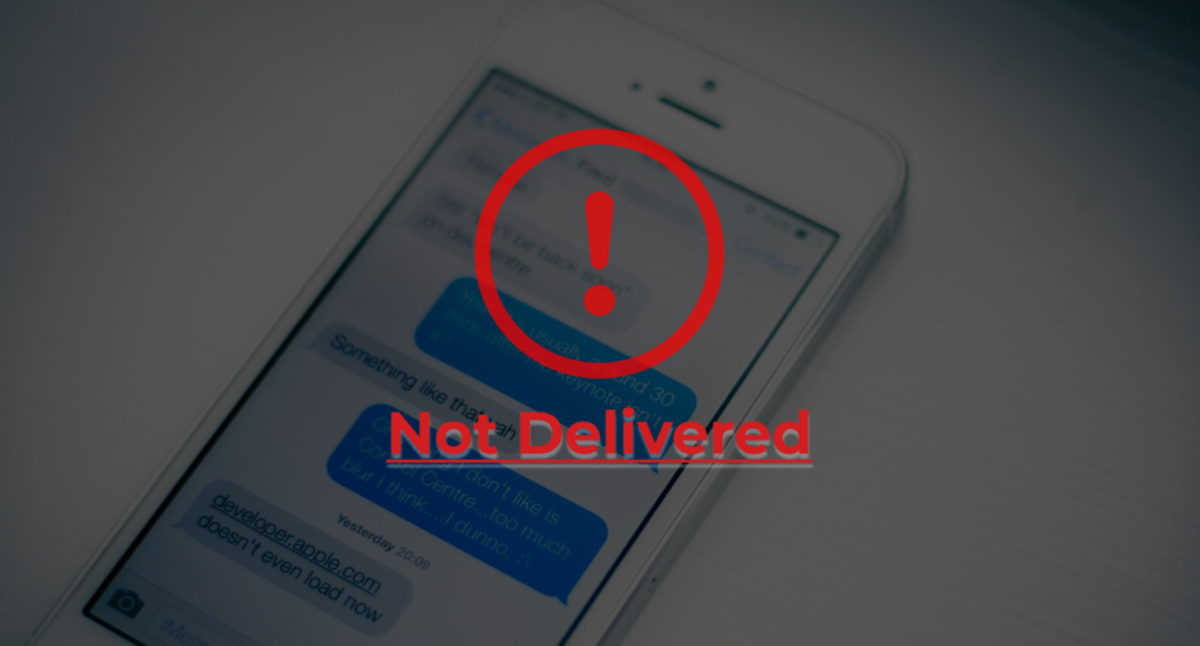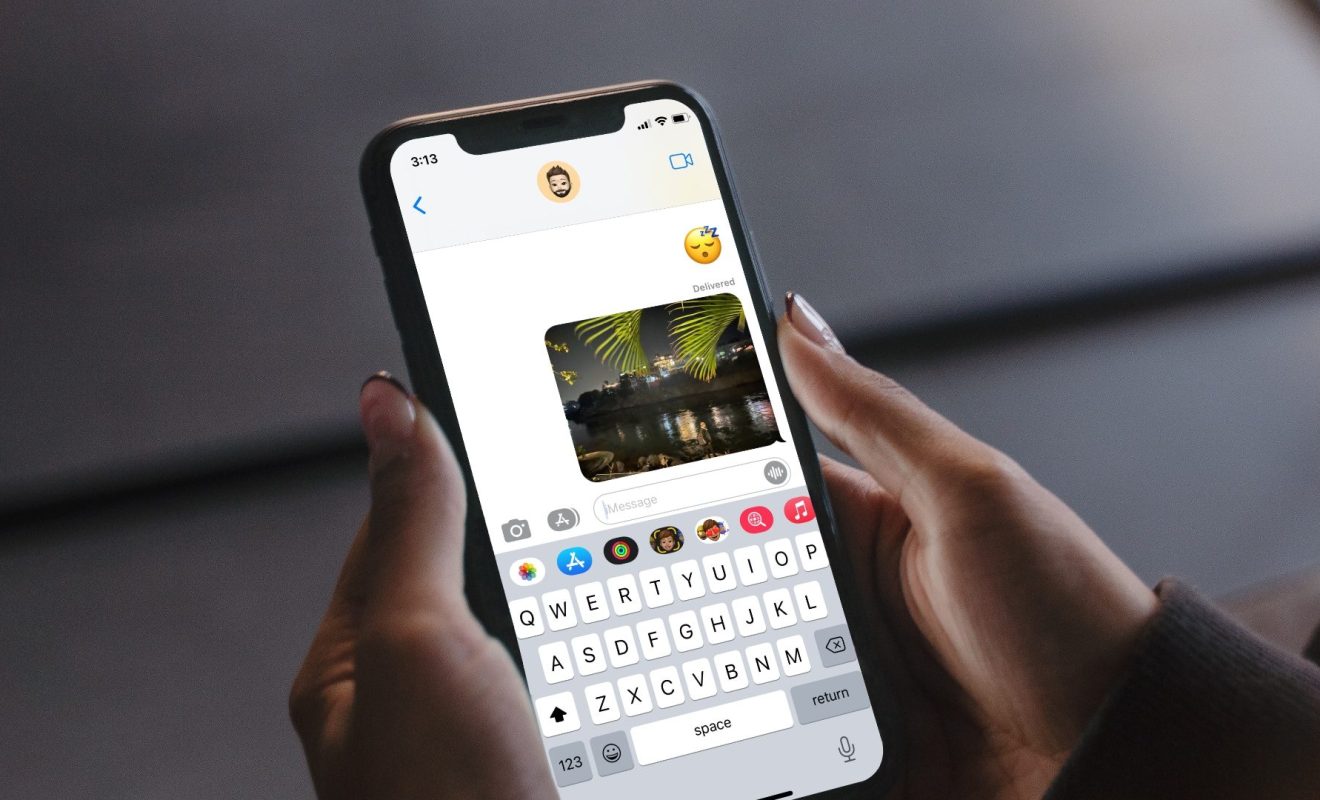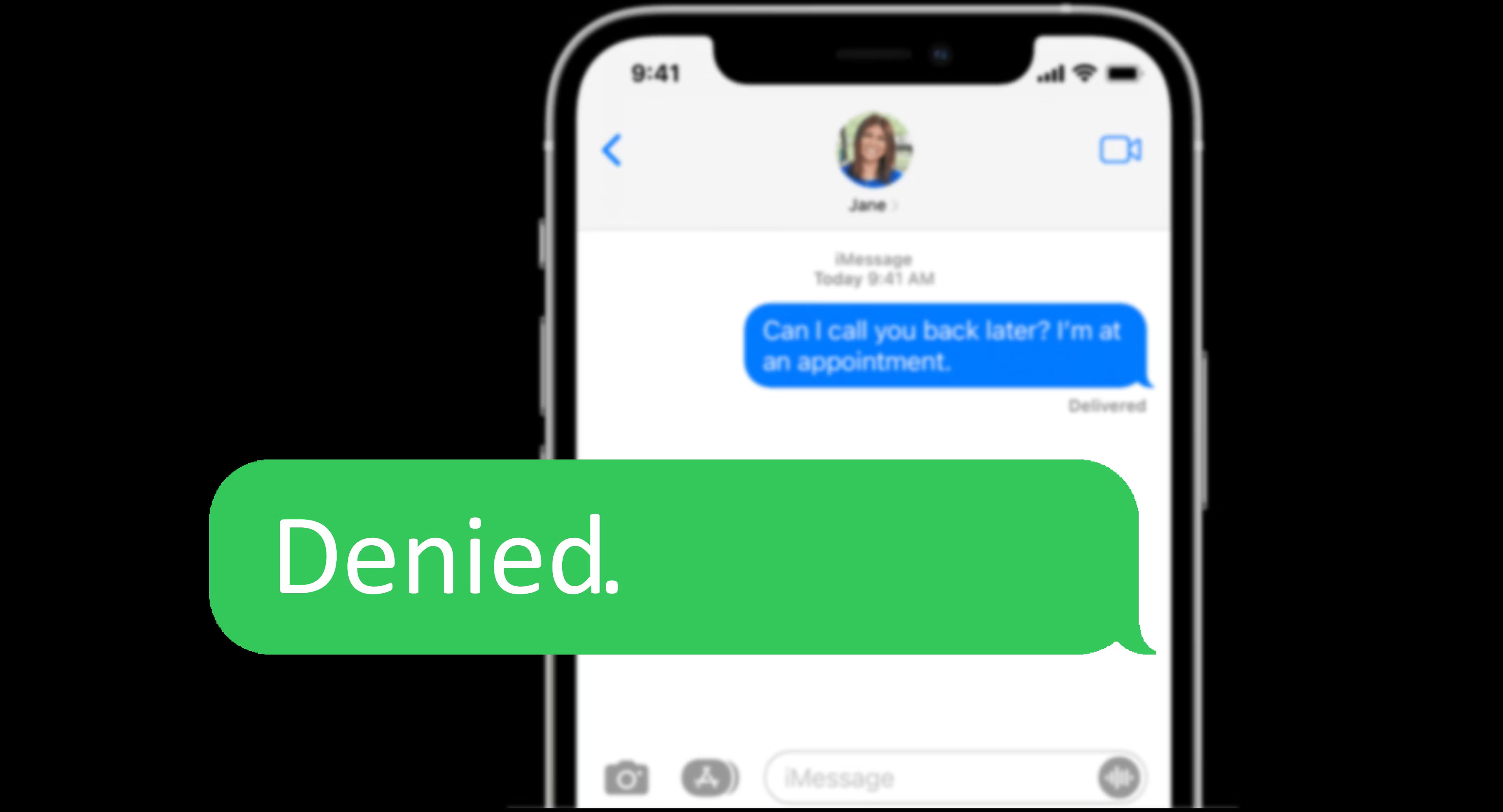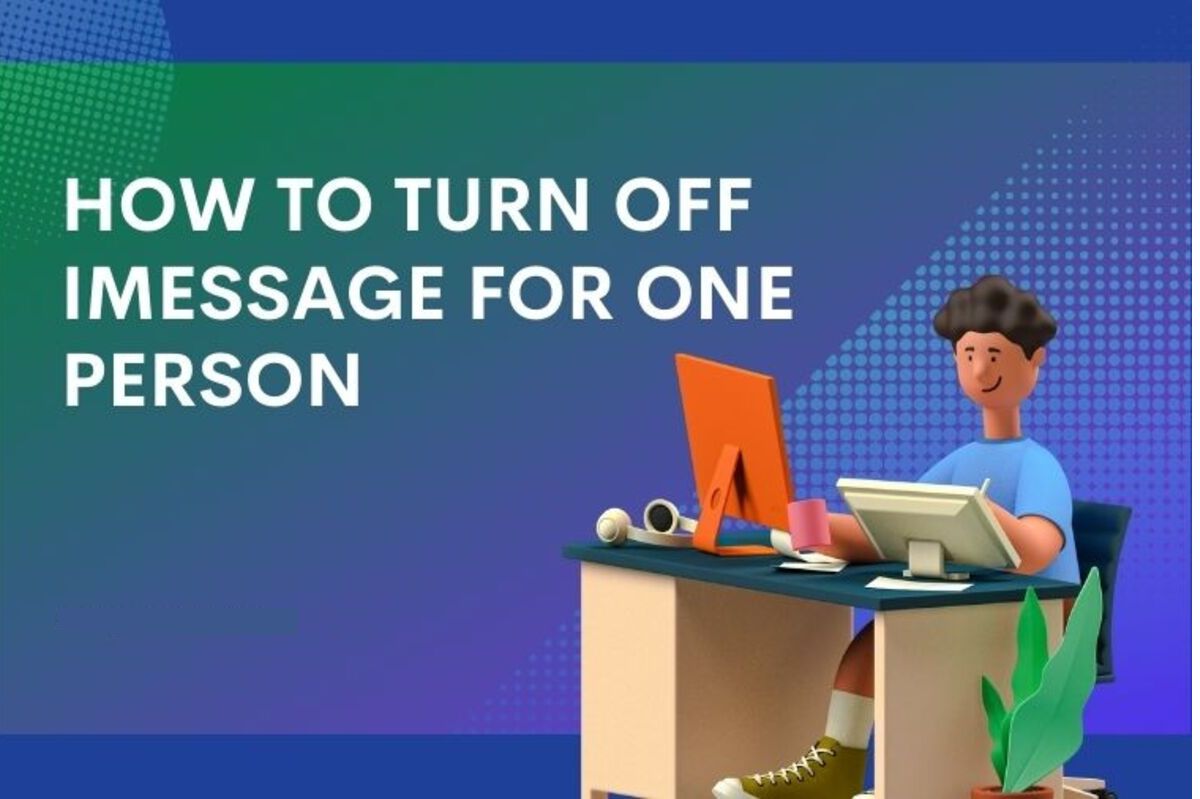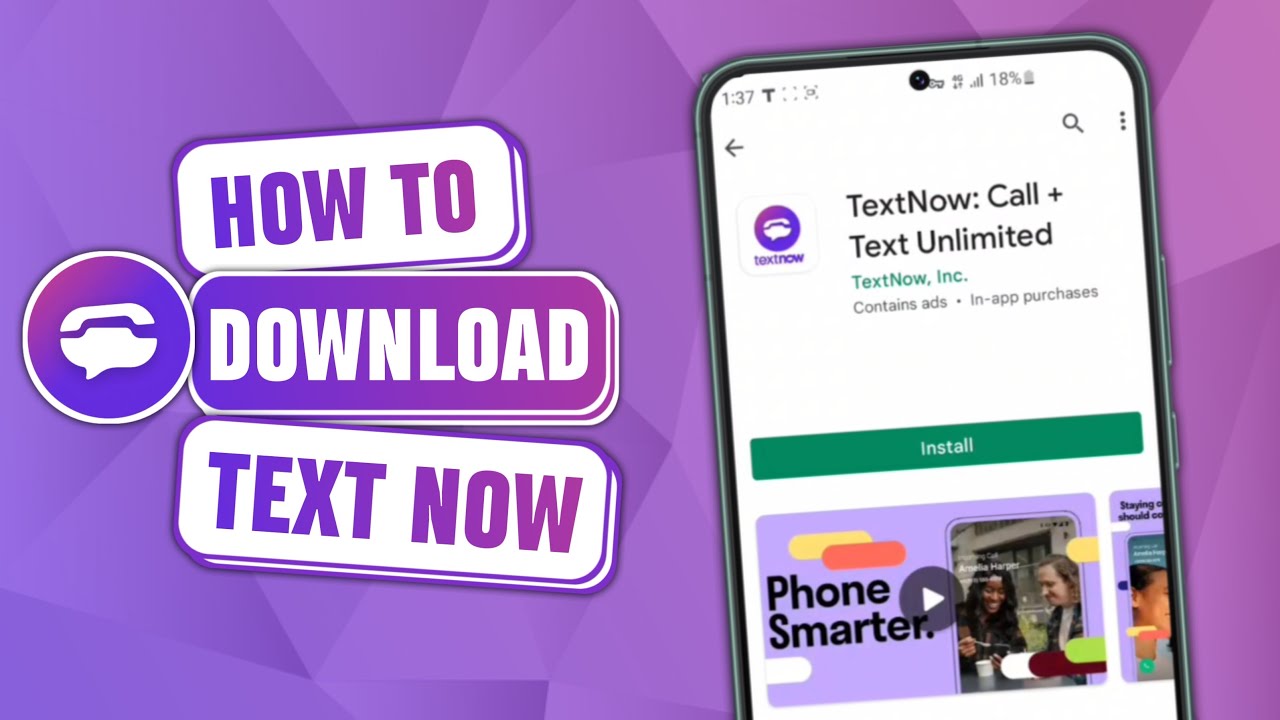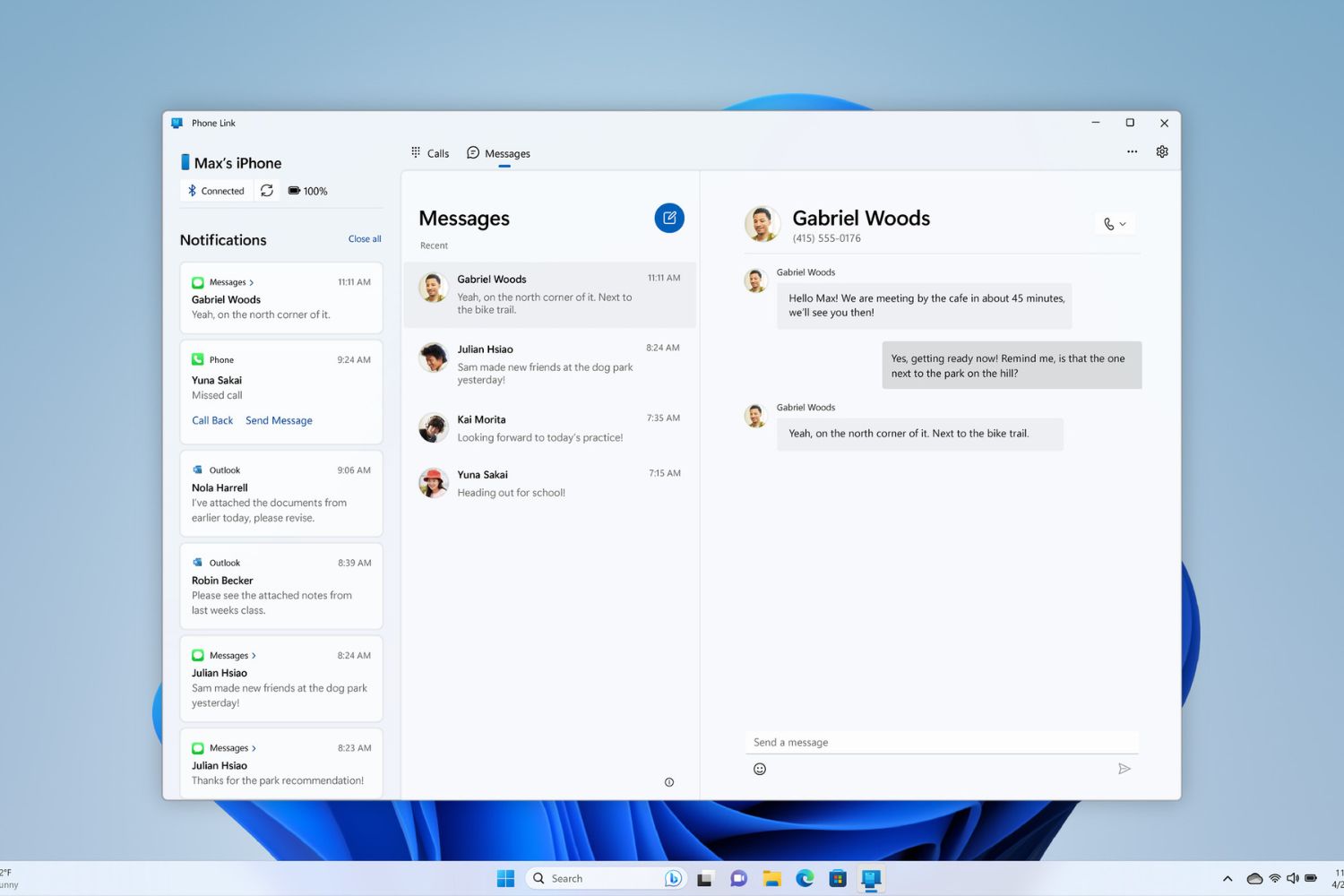Introduction
When it comes to communication, our smartphones play a crucial role in keeping us connected with friends, family, and colleagues. However, sometimes there can be challenges when trying to send messages from an iPhone to an Android device. It can be frustrating and confusing when messages fail to reach their intended recipients. If you’ve encountered this problem, you’re not alone.
There can be various reasons why your iPhone may not be sending messages to Android users. In this article, we will explore some common issues that can cause this problem and provide troubleshooting steps to help you resolve it. Whether you’re using iMessage or regular text messaging, it’s essential to understand the potential roadblocks and how to overcome them.
Before we delve into the troubleshooting steps, it’s important to note that messages sent from iPhone to Android devices should be sent as regular SMS or MMS messages. Unlike iMessage, which is limited to Apple devices, SMS and MMS messages can be sent and received across different platforms and devices.
If you’re experiencing difficulty sending messages from your iPhone to an Android device, continue reading to learn more about the possible causes and how to fix them.
Common issues when sending messages from iPhone to Android
While iPhones and Android devices are designed to be compatible with each other, there are several common issues that can arise when trying to send messages from an iPhone to an Android device. Understanding these issues can help you identify the root cause and find a suitable solution. Let’s explore some of the most prevalent issues:
- iMessage is still enabled: iMessage is a messaging service exclusive to Apple devices. When sending a message to an Android device, make sure that iMessage is disabled, as it may prevent your messages from being sent as regular SMS or MMS.
- The recipient’s phone number or email address is not correct: Double-check the recipient’s contact information to ensure that you have the correct phone number or email address. Small errors in the contact information can prevent messages from being delivered.
- Poor network connection: A weak or unstable network connection can disrupt the message sending process. Make sure you have a stable cellular or Wi-Fi connection before attempting to send a message.
- MMS messaging is disabled on your iPhone: Multimedia Messaging Service (MMS) allows you to send multimedia content such as photos and videos. If MMS messaging is disabled on your iPhone, it can prevent the delivery of messages that contain multimedia content to Android devices.
- Software bug or compatibility issue: Software bugs or compatibility issues between iOS and Android can sometimes cause messaging problems. Keeping your iPhone software up to date can help resolve any known issues and ensure compatibility.
- The recipient’s phone is turned off or out of range: If the recipient’s Android device is turned off or out of network coverage, messages may not be delivered. It is essential to ensure that the recipient’s device is powered on and within network range.
- Carrier-related issues: Certain carriers may have restrictions or limitations when it comes to cross-platform messaging. Contact your carrier to determine if there are any specific settings or configurations required to send messages to Android devices.
Understanding these common issues will allow you to troubleshoot them effectively. In the following sections, we will provide step-by-step instructions on how to fix messaging issues when sending messages from your iPhone to an Android device.
Issue #1: iMessage is still enabled
One of the most common reasons why messages from an iPhone fail to reach Android devices is because iMessage is still enabled. iMessage is an Apple-exclusive messaging service that allows iPhone users to send messages, photos, videos, and more to other Apple devices.
If iMessage is enabled on your iPhone and you’re trying to send a message to an Android user, the message will be sent as an iMessage instead of a regular SMS or MMS. Since iMessage is not compatible with Android devices, the message will fail to be delivered.
To ensure that your messages are sent as regular text messages, follow these steps to disable iMessage:
- Open the “Settings” app on your iPhone.
- Scroll down and tap on “Messages”.
- Toggle off the switch next to “iMessage”.
Once iMessage is disabled, your messages will be sent as regular SMS or MMS messages to Android devices.
It’s important to note that disabling iMessage may affect your ability to send and receive messages with other iPhone users. Therefore, if you regularly communicate with other iPhone users, you may need to find an alternative messaging platform or re-enable iMessage when necessary.
If you have disabled iMessage and are still experiencing issues sending messages to Android devices, proceed to the next section to explore additional troubleshooting steps.
Issue #2: The recipient’s phone number or email address is not correct
Another common issue that can prevent you from sending messages from your iPhone to an Android device is an incorrect recipient’s phone number or email address. Even a small error in the contact information can result in messages failing to reach the intended recipient.
To ensure that you have the correct contact information for the recipient, follow these steps:
- Open the Contacts app on your iPhone.
- Search for the contact you are having trouble messaging.
- Verify that the phone number or email address associated with the contact is correct.
- If necessary, edit the contact information to ensure it is accurate.
If you are manually entering the recipient’s phone number or email address when composing a message, double-check that you have entered it correctly. It’s easy to accidentally transpose digits or include the wrong email domain, leading to message delivery failure.
If the recipient has recently changed their phone number or email address, make sure you have updated their contact information accordingly. Outdated contact information can also lead to failed message delivery.
By verifying and correcting the recipient’s phone number or email address, you can ensure that your messages have the correct destination and increase the chances of successful delivery to Android devices.
If you have verified the recipient’s contact information and are still unable to send messages, proceed to the next section to explore additional troubleshooting steps.
Issue #3: Poor network connection
A weak or unstable network connection can be another culprit behind the failure to send messages from your iPhone to an Android device. When the network signal is poor, it can disrupt the communication between your device and the recipient’s device.
To ensure a stable network connection, follow these steps:
- Check the signal strength indicator on your iPhone. If it indicates a weak signal, try moving to an area with better network coverage.
- If you are connected to Wi-Fi, make sure the Wi-Fi signal is strong and stable. Consider switching to your cellular data connection if the Wi-Fi signal is weak or unreliable.
- If you are using cellular data, try toggling the Airplane Mode on and off. This can sometimes help refresh your network connection.
- Restart your iPhone to reset the network settings and establish a fresh connection.
In addition to these steps, it’s also a good practice to keep your iPhone’s software up to date. Software updates often include improvements to network connectivity and can help resolve any known issues.
If you are still experiencing network-related issues, contact your mobile service provider to inquire about any network outages or service disruptions in your area. They may be able to provide further assistance or advice on how to improve your network connection.
By ensuring a strong and stable network connection, you can increase the chances of successful message delivery to Android devices.
If you have addressed the network connection issue and are still unable to send messages, proceed to the next section to explore additional troubleshooting steps.
Issue #4: MMS messaging is disabled on your iPhone
If you’re unable to send messages from your iPhone to an Android device, it’s possible that MMS (Multimedia Messaging Service) messaging is disabled on your device. MMS allows you to send multimedia content such as photos, videos, and audio files via text messages.
Follow these steps to enable MMS messaging on your iPhone:
- Open the “Settings” app on your iPhone.
- Scroll down and tap on “Messages”.
- Toggle on the switch next to “MMS Messaging”.
Enabling MMS messaging ensures that your iPhone can send and receive multimedia content in text messages, allowing for a more enriched messaging experience with Android users.
It’s worth noting that some carriers may have specific settings for MMS messaging, such as maximum file size or restrictions on certain types of multimedia content. If you continue to experience issues despite enabling MMS messaging, contact your carrier for further assistance and to ensure that your account is set up correctly for MMS capabilities.
By enabling MMS messaging on your iPhone, you can enhance the message content you send to Android devices and improve the chances of successful message delivery.
If you have enabled MMS messaging and are still facing problems when sending messages, proceed to the next section to explore additional troubleshooting steps.
Issue #5: Software bug or compatibility issue
Software bugs or compatibility issues between iOS and Android can occasionally lead to problems when sending messages from your iPhone to an Android device. These issues can arise due to the complex nature of different operating systems and their interactions.
To address software bugs and ensure compatibility, it’s important to keep your iPhone’s software up to date. Software updates often include bug fixes, performance improvements, and compatibility enhancements. Follow these steps to check for software updates:
- Open the “Settings” app on your iPhone.
- Scroll down and tap on “General”.
- Select “Software Update”.
- If an update is available, tap on “Download and Install”.
Updating your iPhone’s software to the latest version can resolve known issues and enhance compatibility with Android devices.
In addition to updating your iPhone, consider checking for app updates as well. Developers regularly release updates to their apps, which can address compatibility issues with different platforms and improve overall performance.
If you have already updated your iPhone and the messaging issue persists, try restarting your device. Sometimes, a simple restart can help resolve temporary software glitches and restore proper messaging functionality.
If the issue continues to persist, you can reach out to Apple’s support team or visit an Apple Store for further assistance. They have the expertise to diagnose software-related problems and provide suitable solutions.
By ensuring your iPhone’s software is up to date and addressing any software bugs or compatibility issues, you can increase the chances of successful message delivery to Android devices.
If you have taken these steps and are still unable to send messages, proceed to the next section to explore additional troubleshooting steps.
Issue #6: The recipient’s phone is turned off or out of range
One of the potential reasons why messages from your iPhone are not reaching an Android device is that the recipient’s phone may be turned off or out of network range. When a device is powered off or cannot connect to a cellular network, messages cannot be delivered.
If you suspect that the recipient’s phone is turned off or out of range, there are a few things you can do:
- Check with the recipient directly to confirm if their phone is powered on and within network range. They may be experiencing temporary issues with their phone or network connectivity.
- Consider sending a message through an alternative communication platform such as email, social media, or a messaging app that is compatible with both iOS and Android devices.
- Try sending the message at a later time when you know the recipient’s phone is likely to be turned on and within network range.
It’s important to be aware that the availability of network coverage can vary based on geographic location and carrier service. If you are in an area with limited network coverage, sending messages to Android devices may be more challenging.
If you consistently encounter this issue with multiple recipients, it may be worth checking with your carrier to ensure that there are no additional network-related problems or outages in your area. They can provide further insights and assistance if necessary.
By confirming that the recipient’s phone is turned on and within network range, you can eliminate this possibility as the cause of the messaging issue.
If you have determined that the recipient’s phone is not the issue and are still unable to send messages, proceed to the next section to explore additional troubleshooting steps.
Issue #7: Carrier-related issues
Carrier-related issues can sometimes hinder the successful delivery of messages from your iPhone to an Android device. Different carriers may have specific configurations or restrictions when it comes to cross-platform messaging, which can impact the delivery process.
If you suspect that the messaging issue is carrier-related, here are a few steps you can take:
- Contact your mobile service provider or carrier to inquire if there are any known issues or restrictions regarding messaging between iOS and Android devices.
- Ask your carrier to verify that your account is set up correctly for sending messages to Android devices. They can ensure that the necessary features and configurations are enabled on your account.
- If advised by your carrier, try switching the network settings on your iPhone. This can involve adjusting the cellular data settings or choosing a different network mode to see if it improves the message delivery process.
By reaching out to your carrier, you can gain insights into any carrier-specific requirements or limitations that could be affecting your ability to send messages. They can provide guidance and support tailored to your specific carrier and account settings.
In some cases, carrier-related issues may require the intervention and assistance of the carrier’s technical support team. They can investigate any network connectivity or configuration issues and work towards resolving them.
It’s important to note that carrier-related issues can be complex and may require time to resolve. Patience and clear communication with your carrier can help streamline the process and increase the chances of a positive outcome.
If you have addressed carrier-related issues and are still experiencing problems with sending messages, continue reading the next section for additional troubleshooting steps.
Troubleshooting steps to fix messaging issues
Experiencing difficulties in sending messages from your iPhone to Android devices can be frustrating, but there are several troubleshooting steps you can take to resolve the issue. Follow these steps to fix messaging issues:
- Step 1: Disable iMessage: Ensure that iMessage is disabled on your iPhone to prevent messages from being sent as iMessages instead of regular SMS or MMS.
- Step 2: Check the recipient’s contact information: Verify that the recipient’s phone number or email address is correct and up to date in your contacts. Mistaken or outdated contact details can lead to message delivery failure.
- Step 3: Ensure a stable network connection: Confirm that you have a strong and stable network connection, whether through Wi-Fi or cellular data. Poor network connectivity can disrupt message delivery.
- Step 4: Enable MMS messaging on iPhone: Turn on MMS messaging on your iPhone to enable the sending of multimedia content in text messages to Android devices.
- Step 5: Update your iPhone software: Keep your iPhone’s software up to date to address software bugs and compatibility issues. Check for software updates regularly and install them as necessary.
- Step 6: Restart both devices: Try restarting both your iPhone and the recipient’s Android device. This can help refresh connections and resolve temporary issues.
- Step 7: Contact your carrier for assistance: If all else fails, reach out to your mobile service provider or carrier for guidance. They can provide support regarding carrier-specific settings and configurations.
By following these troubleshooting steps, you can identify and address common issues that can hinder message delivery between your iPhone and Android devices. Each step is designed to tackle specific potential problems, providing a comprehensive approach to resolving messaging issues.
Remember, it’s important to be patient and thorough while troubleshooting. Not every step may be necessary in your particular case, but going through each one can help you isolate and resolve the root cause of the messaging problem.
If you have completed all the troubleshooting steps and continue to experience issues with sending messages, it may be necessary to seek further technical support from Apple or your carrier to resolve the issue.
Step 1: Disable iMessage
When experiencing difficulties sending messages from your iPhone to Android devices, the first step is to disable iMessage. iMessage is an Apple-exclusive messaging service that allows iPhone users to send messages, photos, videos, and more to other Apple devices. However, when sending a message to an Android device, it’s important to ensure that iMessage is disabled, as it may prevent your messages from being sent as regular SMS or MMS.
To disable iMessage on your iPhone:
- Open the “Settings” app on your iPhone.
- Scroll down and tap on “Messages”.
- Toggle off the switch next to “iMessage”.
By disabling iMessage, your messages will be sent as regular SMS or MMS messages to Android devices, allowing for successful communication across different platforms.
It’s worth noting that disabling iMessage may affect your ability to send and receive messages with other iPhone users. If you regularly communicate with other iPhone users, consider using alternative messaging platforms or re-enabling iMessage as needed.
Remember to check whether iMessage is disabled whenever you encounter messaging issues with Android devices. This step ensures that you’re using the appropriate messaging protocol for cross-platform communication.
If you have disabled iMessage and continue to experience issues with sending messages, proceed to the next troubleshooting step for further resolution options.
Step 2: Check the recipient’s contact information
When you encounter difficulties sending messages from your iPhone to Android devices, it’s important to double-check the recipient’s contact information. A small error in the phone number or email address can prevent your messages from reaching the intended recipient. Verifying and ensuring accurate contact details can help facilitate successful message delivery.
Follow these steps to check the recipient’s contact information:
- Open the “Contacts” app on your iPhone.
- Search for the contact you’re having trouble messaging.
- Verify that the phone number or email address associated with the contact is correct.
- If necessary, edit the contact information to ensure it’s accurate.
It’s also important to note any recent changes in the recipient’s contact information. If they have recently switched phone numbers or email addresses, make sure to update their contact details accordingly.
If you’re manually entering the recipient’s phone number or email address when composing a message, double-check that you’ve entered it correctly. Transposing digits or including the wrong domain can result in message delivery failure.
By confirming the accuracy of the recipient’s contact information, you can eliminate potential errors that may hinder successful message delivery. Taking the time to verify this information ensures that your messages are directed to the correct recipient.
If you have confirmed the recipient’s contact information and continue to experience issues with sending messages, proceed to the next troubleshooting step for further resolution options.
Step 3: Ensure a stable network connection
Having a stable network connection is crucial for successful message delivery from your iPhone to Android devices. If your network connection is weak or unstable, it can disrupt the communication process and prevent messages from reaching their intended recipients. Taking steps to ensure a stable network connection can help resolve messaging issues.
Follow these steps to ensure a stable network connection:
- Check the signal strength indicator on your iPhone. If it indicates a weak signal, try moving to an area with better network coverage.
- If you’re connected to Wi-Fi, make sure the Wi-Fi signal is strong and stable. If necessary, consider disconnecting from the current Wi-Fi network and connecting to a more reliable one.
- If you’re using cellular data, toggle the Airplane Mode on and off. This can help refresh your network connection and establish a more stable connection.
- Restart your iPhone to reset the network settings and establish a fresh connection.
It’s also important to keep in mind that network coverage can vary based on the geographic location and your carrier’s service availability. If you’re in an area with limited network coverage, it may impact your ability to send messages to Android devices.
By ensuring a stable network connection, you can improve the chances of successful message delivery. A strong and reliable network signal provides a solid foundation for seamless communication across different platforms.
If you’ve ensured a stable network connection and continue to experience issues with sending messages, proceed to the next troubleshooting step for further resolution options.
Step 4: Enable MMS messaging on iPhone
Enabling Multimedia Messaging Service (MMS) on your iPhone is essential for sending and receiving multimedia content, such as photos and videos, in text messages. If MMS messaging is disabled, it can prevent the successful delivery of messages containing multimedia content to Android devices.
Follow these steps to enable MMS messaging on your iPhone:
- Open the “Settings” app on your iPhone.
- Scroll down and tap on “Messages”.
- Make sure the switch next to “MMS Messaging” is turned on.
Enabling MMS messaging ensures that your iPhone can send and receive multimedia content in text messages to Android devices, enhancing the messaging experience across different platforms.
It’s also worth noting that certain carriers may have specific settings or limitations for MMS messaging, such as maximum file size or restrictions on certain types of multimedia content. If you continue to experience issues even after enabling MMS messaging, contact your carrier for further assistance and to ensure that your account is properly configured for MMS capabilities.
By enabling MMS messaging on your iPhone, you increase the chances of successful message delivery, as it allows for the transmission of multimedia content. This step removes any potential barriers that could prevent Android users from receiving the intended message content.
If you have enabled MMS messaging and are still encountering problems with sending messages, proceed to the next troubleshooting step for further resolution options.
Step 5: Update your iPhone software
Keeping your iPhone’s software up to date is crucial for resolving messaging issues. Software updates often include bug fixes, performance improvements, and compatibility enhancements that can address known issues and ensure smooth communication between your iPhone and Android devices.
Follow these steps to check for iPhone software updates:
- Open the “Settings” app on your iPhone.
- Scroll down and tap on “General”.
- Select “Software Update”.
- If an update is available, tap on “Download and Install”.
By updating your iPhone software to the latest version, you can improve compatibility, resolve software bugs, and enjoy a more reliable messaging experience.
In addition to updating the overall system software, it’s also essential to keep your messaging apps up to date. Developers regularly release updates that address compatibility issues and optimize their apps for better performance.
Regularly checking for software updates and installing them promptly can help mitigate any messaging issues caused by software bugs or compatibility problems. By ensuring that your software is up to date, you can maximize the chances of successful message delivery to Android devices.
If you have updated your iPhone software and continue to experience issues with sending messages, proceed to the next troubleshooting step for further resolution options.
Step 6: Restart both devices
When troubleshooting messaging issues between your iPhone and Android devices, a simple but effective step is to restart both devices. Restarting can help refresh the system and resolve temporary glitches that may be hindering message delivery.
To restart your iPhone, follow these steps:
- Press and hold the power button (located on the side or top of the device) until the “Slide to power off” slider appears.
- Drag the slider to turn off your iPhone.
- Wait for a few moments, then press and hold the power button again until the Apple logo appears.
- Release the power button and allow your iPhone to restart.
Once your iPhone has restarted, proceed to restart the recipient’s Android device as well, if possible.
Restarting both devices can help establish a fresh connection and eliminate any temporary conflicts or issues that may be preventing successful message delivery. It’s a simple yet often effective troubleshooting step that can resolve many communication-related problems.
After both devices have restarted, attempts to send messages again and check if the messaging issue has been resolved. If not, proceed to the next troubleshooting step for further resolution options.
Step 7: Contact your carrier for assistance
If you have followed the previous troubleshooting steps and continue to experience issues with sending messages from your iPhone to Android devices, it may be necessary to seek additional assistance from your mobile service provider or carrier.
By reaching out to your carrier, you can benefit from their expertise and access specific troubleshooting steps tailored to your carrier’s network and settings. Their technical support team can provide guidance and assistance for resolving messaging issues.
Here are a few steps to take when contacting your carrier for assistance:
- Call the customer support number of your mobile service provider or carrier.
- Explain the problem you are encountering in detail, including the steps you have already taken to troubleshoot the issue.
- Follow any instructions or recommendations provided by the customer support representative.
- Ask if there are any known carrier-related issues or settings that may be preventing message delivery.
Your carrier may be able to offer valuable insights and solutions based on their network infrastructure and policies. They can verify that your account is properly configured for messaging and address any specific requirements or limitations related to cross-platform messaging.
Remember to be patient and follow the instructions provided by your carrier’s customer support team. They have the knowledge and resources to assist you in resolving messaging issues effectively.
If necessary, your carrier may escalate the issue to their technical support team or provide additional troubleshooting steps specific to your situation. By working closely with your carrier, you can maximize the chances of resolving any messaging problems that may arise.
If contacting your carrier does not resolve the messaging issue, consider seeking further technical support from Apple or exploring alternative messaging platforms that are compatible with both iOS and Android devices.
Conclusion
Experiencing difficulties when sending messages from an iPhone to an Android device can be frustrating. However, by following the troubleshooting steps outlined in this guide, you can overcome these challenges and improve the chances of successful message delivery.
We explored common issues such as iMessage still being enabled, incorrect recipient contact information, poor network connections, disabled MMS messaging, software bugs or compatibility issues, the recipient’s phone being turned off or out of range, and carrier-related issues. Each step provided insights and instructions on how to address these specific issues.
By disabling iMessage, ensuring accurate recipient contact information, maintaining a stable network connection, enabling MMS messaging, updating your iPhone software, restarting both devices, and seeking assistance from your carrier if needed, you can troubleshoot and resolve most messaging issues.
Remember to approach troubleshooting patiently and step by step, as not every step may be necessary for your specific situation. It’s important to adapt the troubleshooting process to your unique circumstances and seek further assistance from Apple or your carrier if the problem persists.
Effective communication is essential in today’s digital world, and with the right troubleshooting techniques, you can ensure smooth messaging experiences between your iPhone and Android devices.
We hope that this guide has been helpful in resolving your messaging issues, allowing you to connect seamlessly with friends, family, and colleagues across different platforms and devices.







